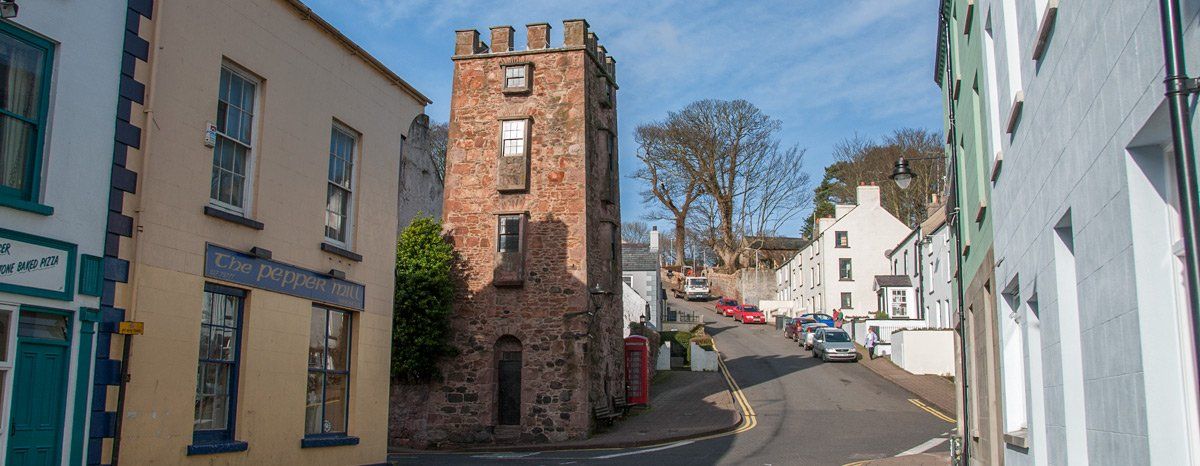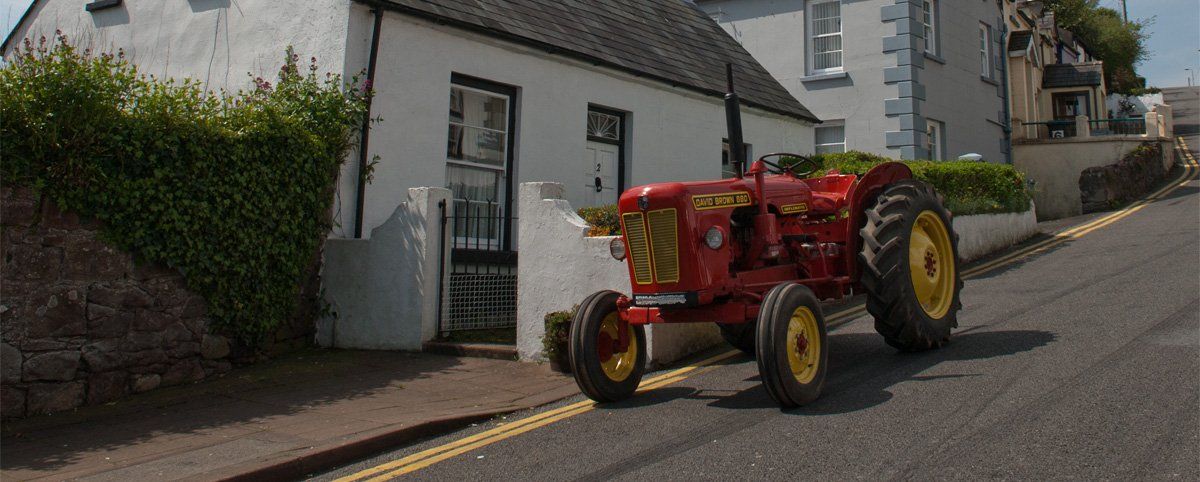Curfew Tower
The Curfew Tower is a centrepiece of the village, built in 1817 by Francis Turnly, the design inspired by the towers he had seen along the Great Wall of China while working there for the East India Company. At one time, Cushendall had eight fair days each year, these attract hundreds of people to the village and those that engaged in unsociable behaviour may well have ended up here. An army pensioner called Dan McBride was the first person employed to garrison the tower, one record states that he was given one year’s supply of food and the following armaments: one musket, a brace of pistols, a bayonet and a thirteen-foot pike. The windows were also designed to allow the pouring of boiling fluid on any attacker below.
A unique drinking fountain set into one side of the tower allows a flow of water to drop to a lower receptacle, allowing a person and a pet to drink at the same time. The tower was bought in 1995 by Bill Drummond of the pop group KLF (1980s), he and fellow band member Jim Cauty are also known for the famous burning of one million pounds on Jura. Today the tower is used as an artist residencies through a trust body called 'In You We Trust'. Each year an exhibition runs to coincide with the 'Heart of the Glens' festival. In 1924, Cushendall became one of the first villages in Ireland to have street lighting, this remarkable achievement was pioneered by 65-year-old Anthony O’Connor, a local miller.
O’Connor was the last commercial miller to operate in Cushendall and realised that small mills were no longer sustainable, so he decided to change his business from milling to generating electricity. In association with the D.S. Electric Company in Belfast, he formed the Cushendall Electric, Light & Power Company and placed six lights between St Mary’s Roman Catholic Church and the start of Mill Street, one on High Street, four along Shore Street, one at the Cushendall Hotel on Bridge Street and three along the road to Waterfoot. Water from the mill race at Mill Street powered a 15 BHP water turbine that was directly connected to a 10kW generator. The new lighting scheme placed Cushendall firmly in the 20th century, ahead of towns like Bangor, which only lit their streets in 1930.



